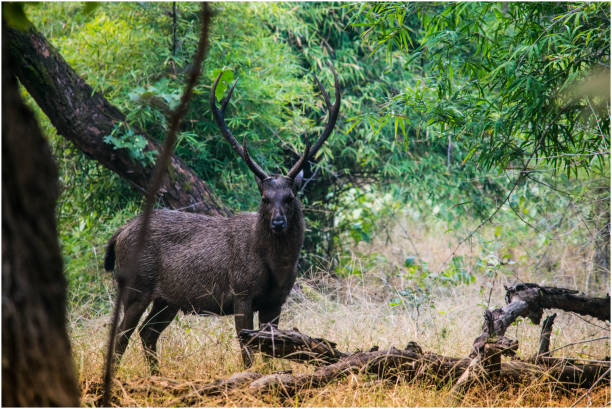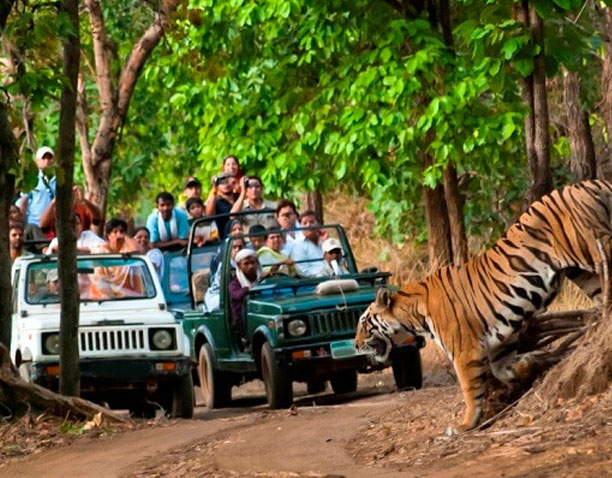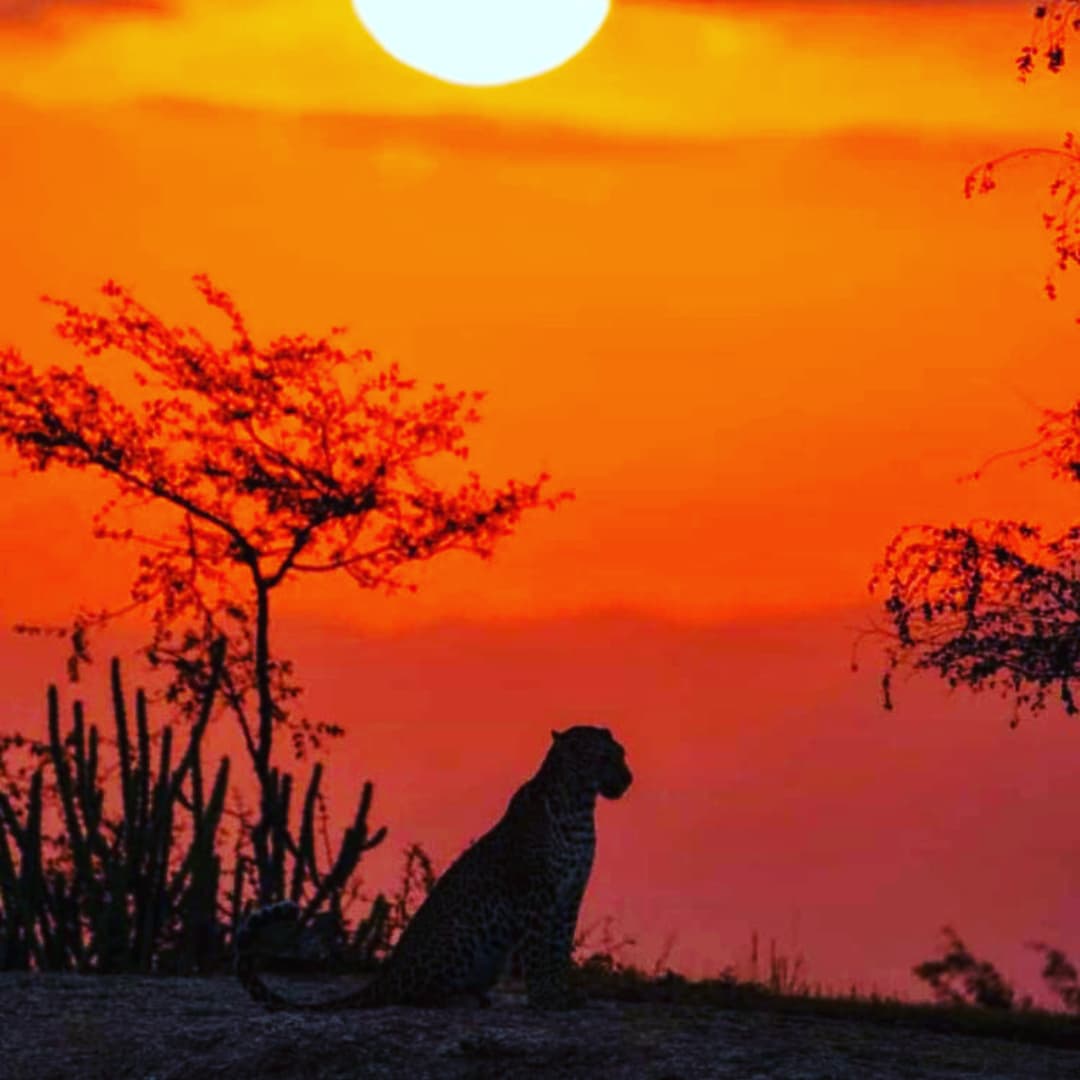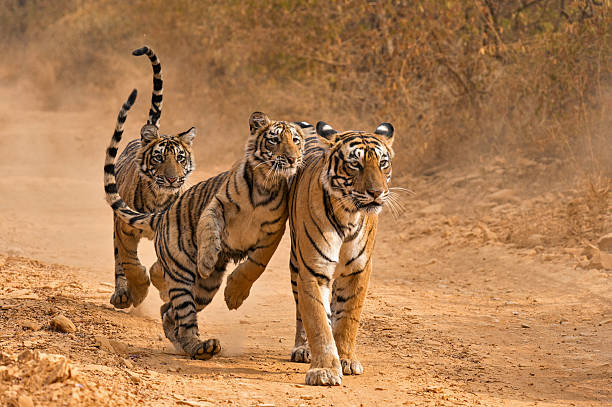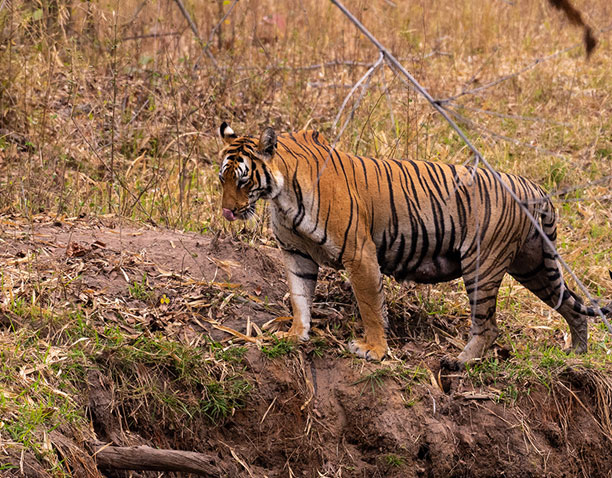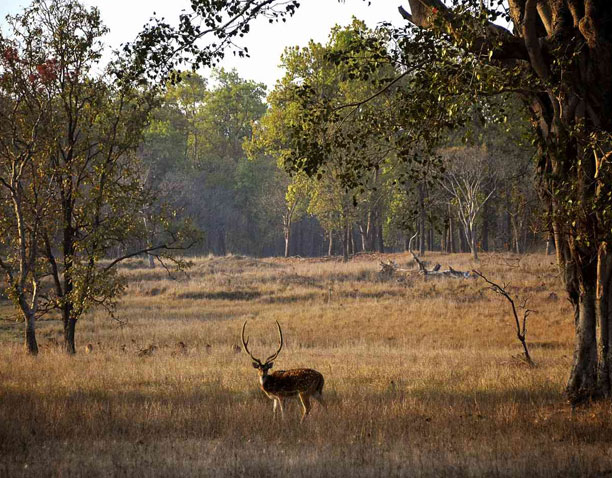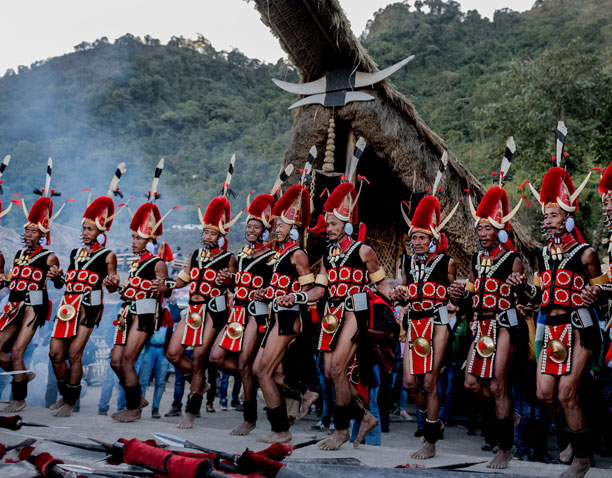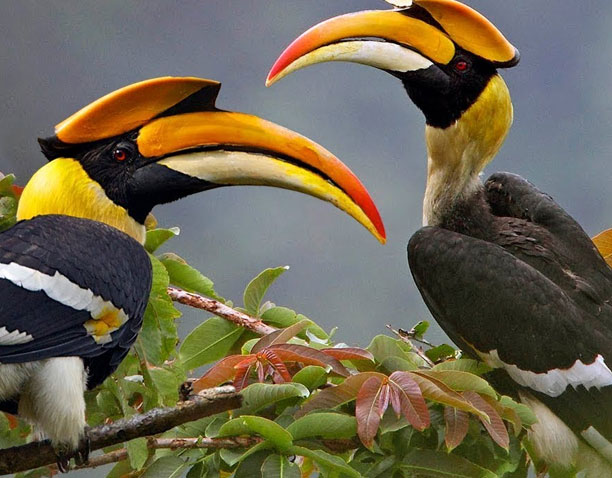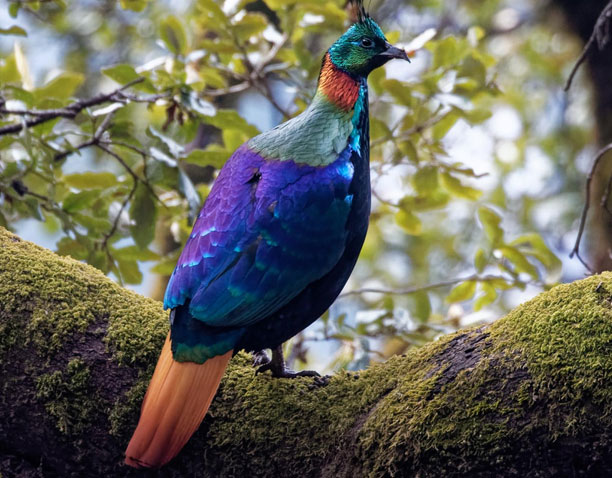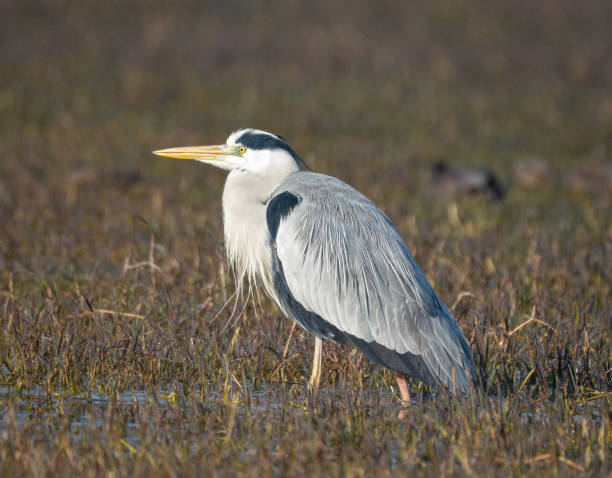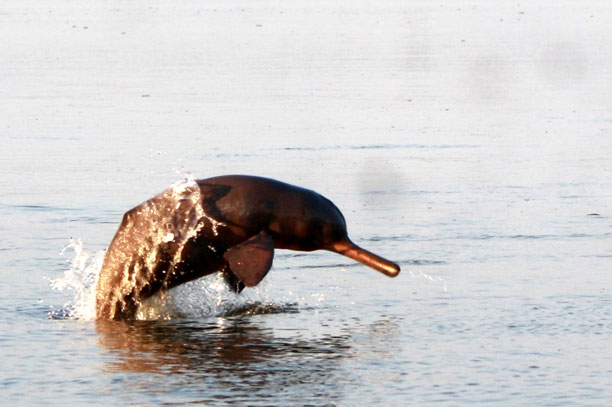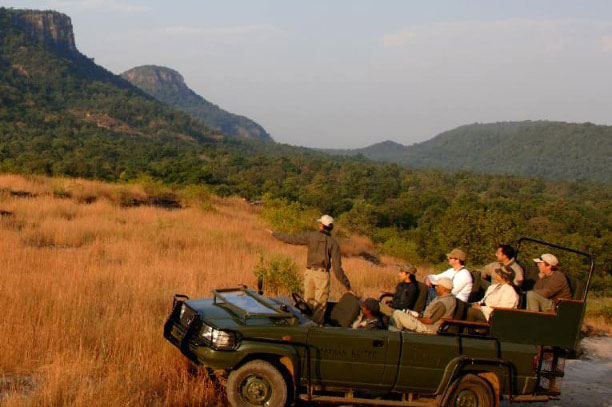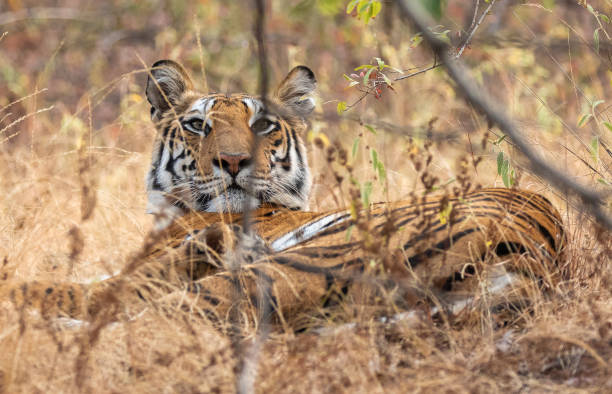Embark on an exhilarating journey as you explore the enchanting realms of Kanha and Bandhavgarh, two of India’s most cherished wildlife havens. Unravel the captivating allure of these national parks, teeming with rich biodiversity and enthralling landscapes that leave nature enthusiasts and adventure seekers awe-struck. As you traverse through the verdant expanses of these pristine sanctuaries, you’ll be privy to a thrilling spectacle of wildlife in their natural habitat. In this comprehensive guide, we’ll help you pick the perfect national park for your next escapade, ensuring an unforgettable experience that goes beyond the ordinary. So, strap on your adventure boots, and let’s delve into the mesmerizing world of Kanha and Bandhavgarh, where the call of the wild echoes through the air, and the allure of nature’s symphony captivates your senses.
History and Significance of Kanha National Park
Kanha National Park, nestled in the heart of Madhya Pradesh, is a true testament to India’s commitment to protecting its rich natural heritage. Established in 1955, this sprawling sanctuary spans an area of over 940 square kilometers, making it one of the largest and most well-preserved national parks in the country. Kanha’s history dates back to the ancient times, with evidence of its association with the epic Ramayana and the mystical kingdom of Mahabharata. It was once the hunting ground of the royal family of Rewa, who recognized the need for conservation and played a pivotal role in the park’s creation.
Over the years, Kanha National Park has gained recognition as a critical habitat for the endangered Bengal tiger and the central Barasingha, also known as the swamp deer. The park’s successful conservation efforts have led to a significant increase in the population of these majestic creatures, making it a shining example of wildlife preservation in India. Additionally, Kanha’s diverse ecosystem supports a plethora of flora and fauna, providing a safe haven for several endangered and endemic species.
The enchanting landscapes of Kanha National Park have also captured the imagination of countless artists, writers, and filmmakers, most notably inspiring Rudyard Kipling’s timeless classic, “The Jungle Book.” Today, the park stands as a symbol of India’s rich natural heritage, inviting visitors from across the globe to witness its remarkable biodiversity and experience the magic of its untamed wilderness.
Wildlife and Biodiversity at Kanha
Kanha National Park boasts a spectacular array of wildlife, with over 350 species of birds, 40 species of mammals, and countless reptiles, amphibians, and insects inhabiting its lush forests and grasslands. The park’s most famous resident is undoubtedly the Bengal tiger, whose powerful presence has drawn wildlife enthusiasts and photographers from around the world. With a healthy population of these magnificent predators, Kanha offers one of the best opportunities to spot a tiger in the wild.
In addition to the Bengal tiger, Kanha is also home to the central Barasingha, a species of swamp deer that was once on the brink of extinction. Thanks to the park’s dedicated conservation efforts, the Barasingha population has made a remarkable recovery, and today, Kanha is the only place in the world where these graceful creatures can be found in their natural habitat. Other notable species that call the park home include the Indian wild dog, leopard, sloth bear, gaur, and the golden jackal.
Beyond its impressive array of fauna, Kanha National Park also hosts a rich variety of flora. The park’s diverse vegetation comprises sal and bamboo forests, expansive meadows, and numerous medicinal plants. This lush greenery not only provides a stunning backdrop for wildlife sightings but also plays a crucial role in maintaining the park’s delicate ecosystem.
Activities and Attractions in Kanha National Park
Exploring Kanha National Park promises an unforgettable adventure for nature lovers and wildlife enthusiasts alike. The park offers a range of activities and attractions designed to provide visitors with an immersive experience of its captivating wilderness. The most popular activity, of course, is the thrilling game drives, which take you deep into the heart of the park, offering unparalleled opportunities to spot an array of wildlife, including the elusive Bengal tiger. Choose from morning or afternoon safaris, guided by expert naturalists who will help you track down the park’s most iconic inhabitants.
For those seeking a more intimate encounter with Kanha’s flora and fauna, the park also offers guided nature walks, which allow you to explore the park’s diverse habitats on foot. These leisurely strolls are perfect for birdwatching, as the park is home to over 350 species of birds, including the Indian roller, crested serpent eagle, and the white-rumped shama. Additionally, nature walks provide a unique opportunity to learn about the park’s fascinating plant life, including its medicinal plants and the towering sal trees that dominate its landscape.
Beyond wildlife sightings, Kanha National Park offers several other attractions for visitors to enjoy. The Kanha Museum, located within the park premises, provides a fascinating insight into the park’s history, wildlife, and conservation efforts. The picturesque Bamni Dadar, or Sunset Point, is another must-visit spot, offering breathtaking panoramic views of the park and the perfect setting for a memorable evening.
History and Significance of Bandhavgarh National Park
Like its counterpart Kanha, Bandhavgarh National Park is a treasure trove of natural beauty and wildlife diversity. Located in the Umaria district of Madhya Pradesh, this enchanting sanctuary encompasses an area of over 820 square kilometers. Established in 1968, Bandhavgarh’s history is steeped in ancient legends and folklore, with the park’s iconic Bandhavgarh Fort believed to date back nearly 2,000 years. The fort, which sits atop a hill in the park’s core area, is said to have been gifted by Lord Rama to his brother Lakshmana, giving the park its name, which translates to “Brother’s Fort.”
Bandhavgarh National Park has earned international acclaim for its remarkable success in tiger conservation. Boasting one of the highest densities of Bengal tigers in the world, the park has played a pivotal role in preserving this endangered species. Furthermore, Bandhavgarh’s diverse habitats support a wealth of other wildlife, including the Indian leopard, sambar deer, and the Indian bison, making it a haven for nature enthusiasts and wildlife photographers.
In recent years, Bandhavgarh has also garnered attention for its commitment to responsible tourism, implementing initiatives that promote the sustainable development of the park and the local communities that surround it. These efforts have not only enhanced the visitor experience but also ensured the long-term protection of the park’s invaluable natural resources.
Wildlife and Biodiversity at Bandhavgarh
Bandhavgarh National Park’s vibrant ecosystem is teeming with an array of flora and fauna, offering visitors the chance to witness the extraordinary diversity of India’s wildlife. The park’s most famous inhabitant is the Bengal tiger, which can be found in abundance throughout its core and buffer zones. Bandhavgarh’s high tiger density makes it one of the best places in the world to spot these majestic creatures in their natural habitat.
Alongside its thriving tiger population, Bandhavgarh is home to a multitude of other wildlife species. The park’s dense forests and grasslands provide a refuge for the Indian leopard, sloth bear, Indian bison, and the elusive jungle cat. Additionally, Bandhavgarh’s wetlands and water bodies attract a variety of birdlife, including the colorful Indian peafowl, the red-headed vulture, and the migratory lesser adjutant stork.
Bandhavgarh’s rich biodiversity extends to its flora, with over 300 species of plants found within the park’s boundaries. The park’s vegetation is characterized by dense sal forests, mixed deciduous woodlands, and vast grasslands that provide sustenance and shelter for its many inhabitants. This lush and varied landscape not only enhances the park’s scenic beauty but also plays a crucial role in maintaining its delicate ecological balance.
Activities and Attractions in Bandhavgarh National Park
A visit to Bandhavgarh National Park promises an unforgettable adventure that goes beyond mere wildlife sightings. The park offers a wealth of activities and attractions designed to provide visitors with a comprehensive understanding of its natural and cultural heritage. The most sought-after experience in Bandhavgarh is undoubtedly the tiger safari, which takes you on a thrilling journey through the park’s core and buffer zones in search of these majestic predators. Visitors can choose from morning or evening safaris, with each trip accompanied by a trained naturalist who will guide you through the park’s diverse landscapes and point out the various species of wildlife that call it home.
For those seeking a more immersive experience, Bandhavgarh National Park also offers guided nature walks and birdwatching tours. These leisurely walks through the park’s verdant forests and grasslands provide an opportunity to witness its stunning biodiversity up close, with expert guides on hand to answer any questions and share fascinating insights into the park’s ecology and wildlife.
Beyond wildlife sightings, Bandhavgarh also boasts a rich cultural heritage, with the iconic Bandhavgarh Fort serving as a testament to the region’s rich historical past. The fort, which dates back nearly 2,000 years, stands atop a hill in the park’s core area and offers breathtaking views of the surrounding landscape. Visitors can explore the fort’s ruins and learn about its fascinating history, which is intertwined with the legends of Lord Rama and his brother Lakshmana.
Comparing Kanha and Bandhavgarh: Which Park is Right for You?
Choosing between Kanha and Bandhavgarh can be a daunting task, as both national parks offer a wealth of natural beauty and wildlife diversity. However, there are a few key differences between the two that may help you decide which park is right for you.
Firstly, Kanha National Park is significantly larger than Bandhavgarh, spanning over 940 square kilometers compared to Bandhavgarh’s 820 square kilometers. This means that Kanha offers a larger area to explore and a wider variety of landscapes, from dense sal forests to expansive meadows. Additionally, Kanha is home to a higher number of bird species, making it a paradise for birdwatchers.
On the other hand, Bandhavgarh National Park has a higher density of Bengal tigers, making it an ideal destination for those hoping to spot these majestic predators in the wild. Bandhavgarh also boasts a rich cultural heritage, with the iconic Bandhavgarh Fort adding a unique historical and architectural dimension to the park’s attractions.
Ultimately, the choice between Kanha and Bandhavgarh will depend on your personal preferences and interests. If you’re looking for a larger park with a greater variety of landscapes and birdlife, Kanha may be the ideal choice. However, if you’re hoping to spot tigers in the wild and explore a park with a rich cultural and historical heritage, Bandhavgarh may be the perfect destination.
Planning Your Visit: Best Time to Go, Accommodations, and Travel Tips
Both Kanha and Bandhavgarh National Parks are open to visitors from October to June, with the peak season running from December to April. The best time to visit the parks is during the cooler months of December to February, when the weather is pleasant and the wildlife is more active. However, the parks are closed during the monsoon season from July to September, so plan your trip accordingly.
When it comes to accommodations, both Kanha and Bandhavgarh offer a range of options to suit every budget and preference. From luxury resorts to budget lodges, there are plenty of choices available, with many located within close proximity to the park entrances. It’s essential to book your accommodations well in advance, especially during peak season, to ensure availability.
When visiting the national parks, it’s important to follow responsible tourism practices and respect the park’s rules and regulations. This includes avoiding littering, staying within designated areas, and refraining from disturbing or feeding the wildlife. Additionally, it’s essential to hire a trained naturalist and follow their instructions when on a safari, both for safety reasons and to ensure a more immersive and informative experience.
Conservation Efforts and Responsible Tourism
Both Kanha and Bandhavgarh National Parks are committed to preserving their rich natural heritage and promoting responsible tourism practices. The parks employ a range of conservation initiatives, including habitat restoration, anti-poaching measures, and community engagement programs, to ensure the long-term survival of their valuable natural resources.
Responsible tourism is also a key focus for both parks, with initiatives in place to promote sustainable tourism practices and minimize the impact of visitors on the environment. This includes limiting the number of vehicles allowed in the parks, promoting eco-friendly accommodations, and encouraging visitors to follow responsible tourism guidelines.
As visitors to these national parks, it’s essential to do our part in supporting their conservation efforts and promoting responsible tourism practices. By following the park’s rules and regulations, minimizing our impact on the environment, and supporting eco-friendly initiatives, we can help ensure the long-term survival of these invaluable natural resources.
Conclusion
Kanha and Bandhavgarh National Parks offer a captivating glimpse into India’s rich natural heritage, with their breathtaking scenery and diverse wildlife providing a truly immersive and unforgettable experience. Whether you’re a wildlife enthusiast, a nature lover, or simply seeking a unique and adventurous getaway, these national parks have something for everyone. By following responsible tourism practices and supporting their conservation efforts, we can help ensure the long-term survival of these invaluable natural resources and continue to enjoy their beauty and wonder for generations to come.
If you’re interested in Indian wildlife safari tours, check out Indian wildlife tours with Castle and King for a unique and memorable experience.

